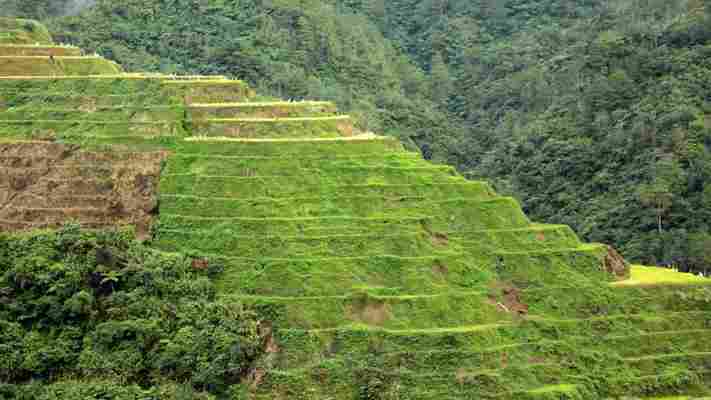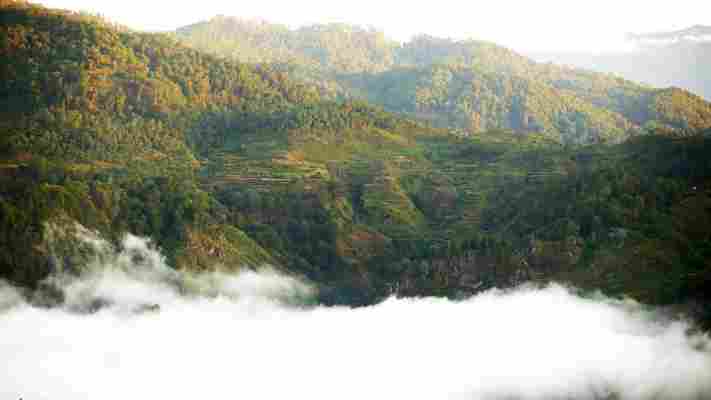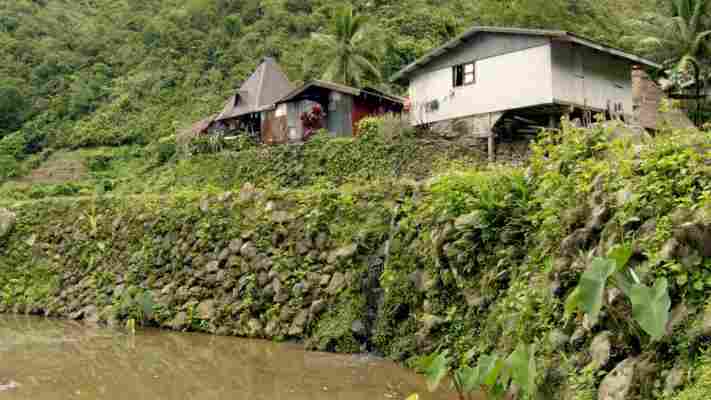Article continues below
Tucked into the slopes of the Philippines’ largest island, Luzon, a living landscape of verdant fields climbs up the steep contours of the Cordillera Mountains towards the sky. Often called the ‘Eighth Wonder of the World’, the Banaue Rice Terraces are a stunning example of mankind harmoniously blending with nature.
Hand-carved into the hills some 2,000 years ago by the Ifugao people, according to Unesco , the terraces were designed to funnel water from the misty rainforests above and help cultivate the Ifugaos’ most important crop: rice. While rice terraces exist throughout Asia, Banaue’s high altitude, steepness and age combine to form a masterpiece of ancient agricultural engineering.

IMG 5100
Two millennia after their construction, these engineering marvels still work, and much of this vast network of terraces – known as the ‘Stairway to Heaven’ – is inscribed on the Unesco World Heritage List. If the terraces were laid end to end, they would stretch approximately 20,100km and circle halfway around the world.
The Ifugao created these hand-hewn paddies by building a series of retaining walls with stones and mud. Each terrace is designed to draw water from the irrigation channels, while also retaining the water – enabling the intensive cultivation of rice in permanently wet conditions.
In the Philippines, sustainable rice terraces like those in Banaue are vital to the local and national economy and diet. The country produced an additional 1.65 million tonnes of rice in 2017 compared to the year before, and the average Filipino consumes well over 100kg of rice per year, making it the country’s most important dietary staple.
Planting, cultivating and harvesting rice is back-breaking work, but the modern Ifugao who live below the terraces still carry on the tradition of their ancestors. After preparing a bed, planting water-soaked seedlings and draining the pools, they must tend to their unique walled terraces, which require near-constant care. To do so, they haul mud and hard, round stones up the slopes from the river to reinforce the steep walls.

IMG 5037
The Ifugao call themselves ipugo , (‘from the hill’). In the past, they carved wooden bulol (rice gods) by hand and stuck them in their fields. These venerated deities are still believed to protect the Ifugaos’ crops and bring abundant harvests, but are also now sold as part of a burgeoning tourist trade.

Rice Ambient house Lrg
By 2001, upwards of 30 percent of these terraces lay abandoned as many Ifugao began migrating to urban areas in search of other work. The land’s deterioration led the terraces to be inscribed on the List of World Heritage in Danger. But there’s hope. Sustainable tourism initiatives like the Banaue Rice Terraces Restoration Project, which launched in 2016 to raise funds and renew interest, hopes to lure a new crop of younger farmers back.
Rice Still Scenic3
In the series, Philippines: Island Treasures, BBC World News broadcaster Rico Hizon joins nature enthusiast Mike Dilger on a journey to discover the vibrant culture and fascinating wildlife of the Philippines. Philippines: Island Treasures airs Friday, 13 April, at 21:30 local time on BBC World News. Learn more about the series and upcoming episodes here .
